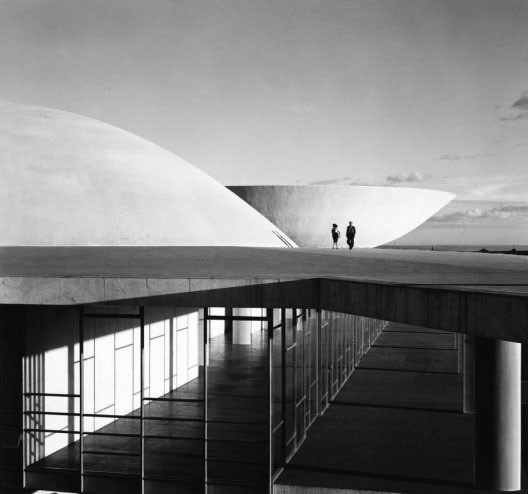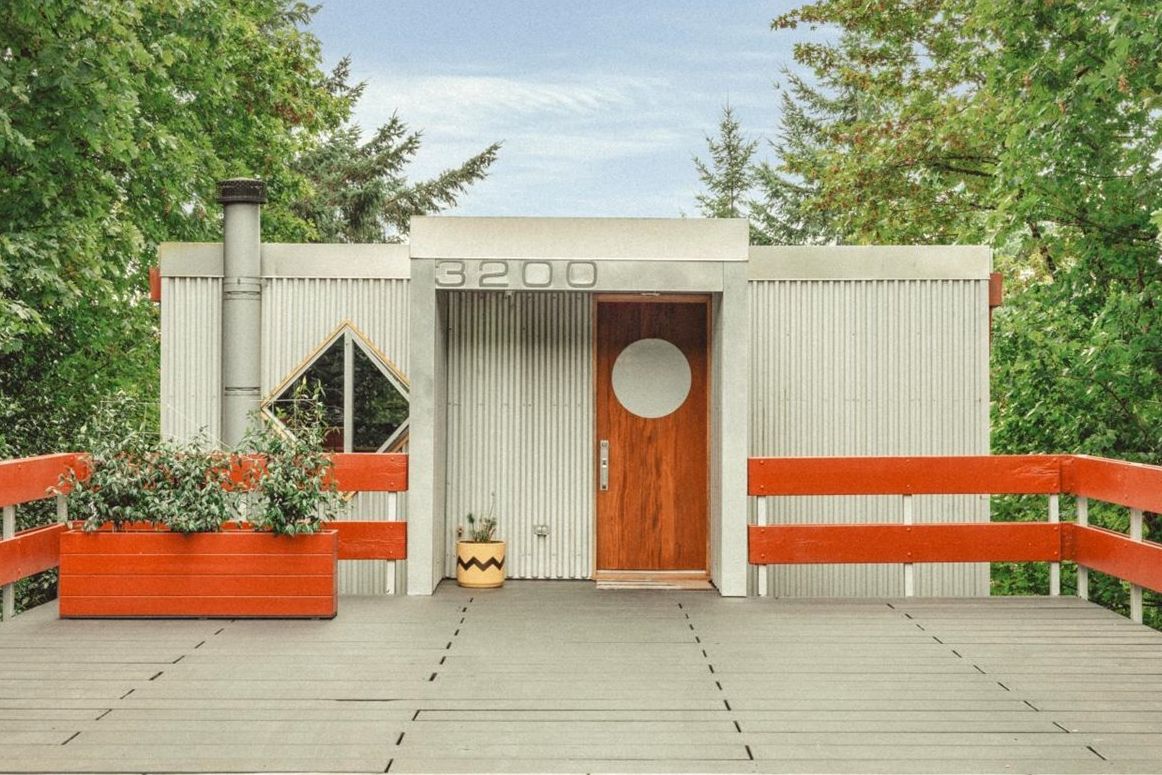Modernism With Curves

None of the mid-century modernism in Portland comes close to the monumental buildings Oscar Niemeyer designed for Brasilia, the new capital of Brazil constructed on empty grasslands in the middle of the country in the late 1950s.
Image: Courtesy of Marcel Gautherot
Portland loves mid-century modernism; most of us would probably agree with that statement. And our go-to modernism tends to Northwest Regional Modernism – for example, the houses of Pietro Belluschi or John Yeon and their followers, or the casual indoor-outdoor living espoused by Charles and Ray Eames and other Californians. But there are other flavors of Modernism, in parts of the world very far away from the Pacific Northwest, heavily inflected with their own regional accents.
The death last week of Brazilian architect Oscar Niemeyer, at age 104, was a reminder of how broad a style modernism is. Niemeyer’s mid-century modernism seems almost from another planet compared to what we see here in rainy Portland. Brazil is of course another hemisphere, if not planet, and as different from the Pacific Northwest as a palm tree is from a Doug Fir.
Niemeyer's mid-century modernism was sensuous and buoyant, filled with color and curves. He said of his architectural style, “I consciously ignored the highly praised right angle and the rational architecture of T-squares and triangles in order to wholeheartedly enter the world of curves…” He further explains his philosophy:
"It is not the right angle that attracts me. Nor the straight line, tough, inflexible, created by man. What attracts me is the free, sensual curve. The curve I find in the mountains of my country, in the sinuous course of its rivers, in the waves of the sea, in the clouds of the sky, in the body of the favorite woman. Of curves is made all the universe."
Niemeyer is best known for designing the buildings of Brasilia, the brand new, built-from-scratch capital of Brazil that rose from the grasslands of the middle of the country in the late 1950s.
Even the concept of Brasilia is foreign to that of Portland: it was a new capitol city built in the mid-20th century, when Portland was hanging on in its humble way, clearly second to Seattle in those space-oriented boom years. There are positives and negatives to each of these urban planning "methods" (deliberate vs. inadvertent; clean slate vs. incremental) and to the results they've created.
It's interesting to consider that while Niemeyer was completing the monumental government buildings of Brasilia in 1960, here in Portland the popular corporate modernist firm Skidmore Owings & Merrill was finishing up the Memorial Coliseum. Both Brasilia and Memorial Coliseum have now, fifty years in, seen good times and bad, and both projects tend to be viewed amidst controversy either as modernist masterpieces or as failed eyesores.




